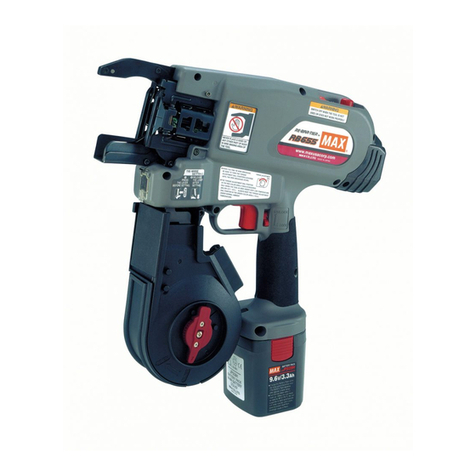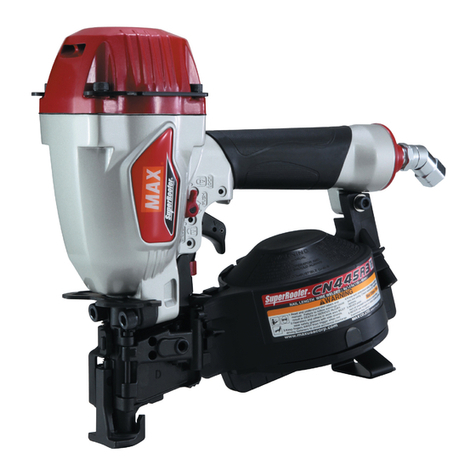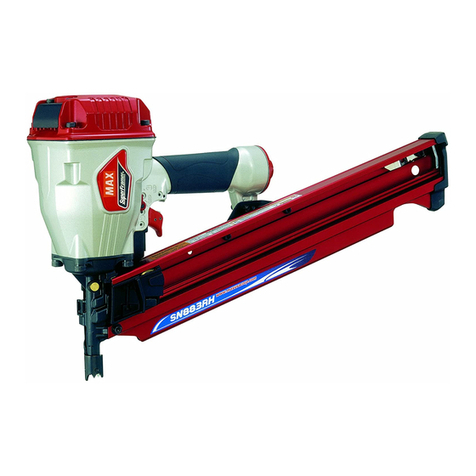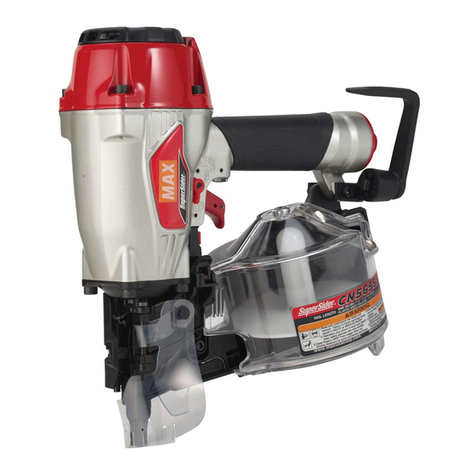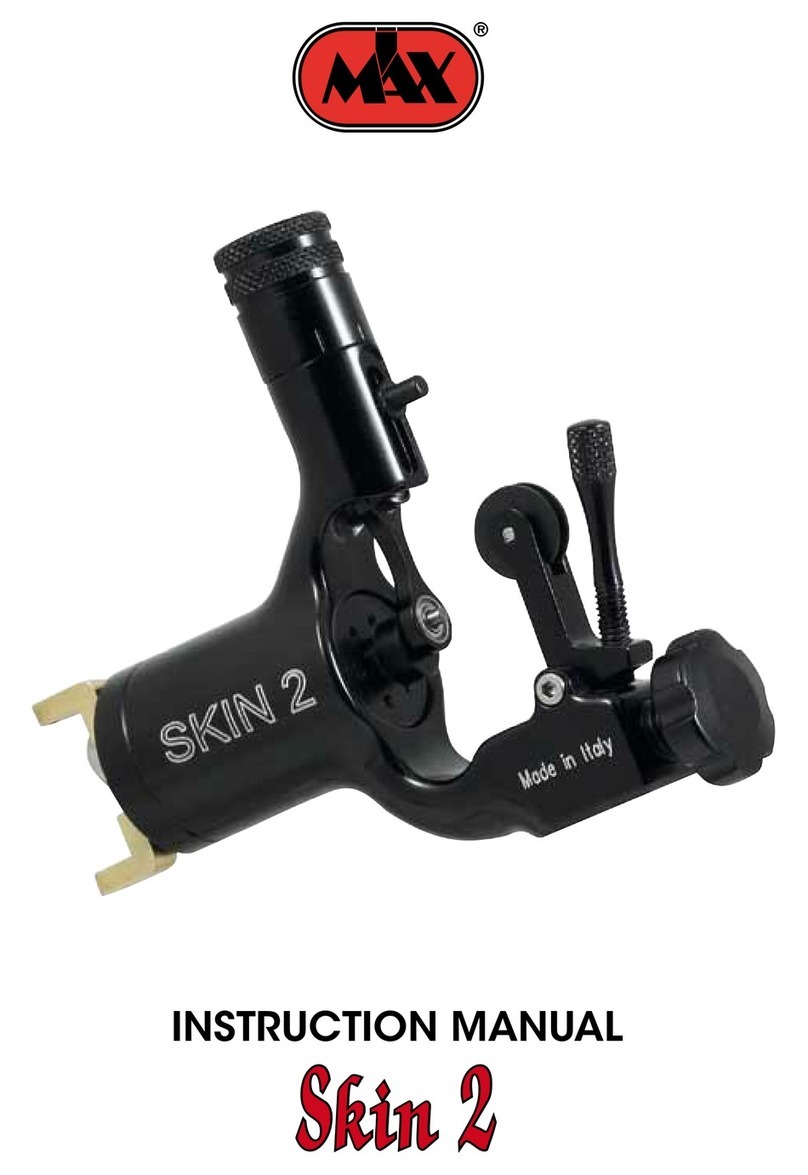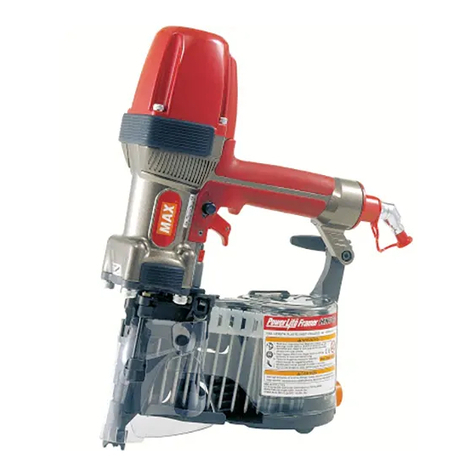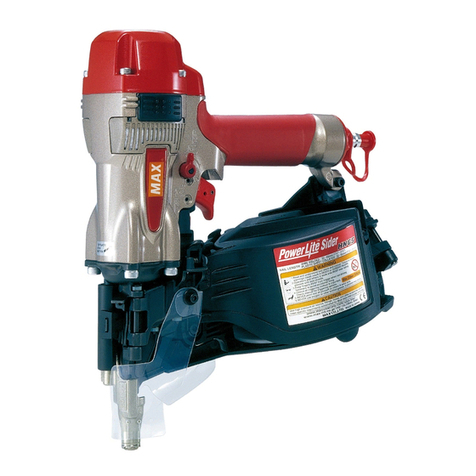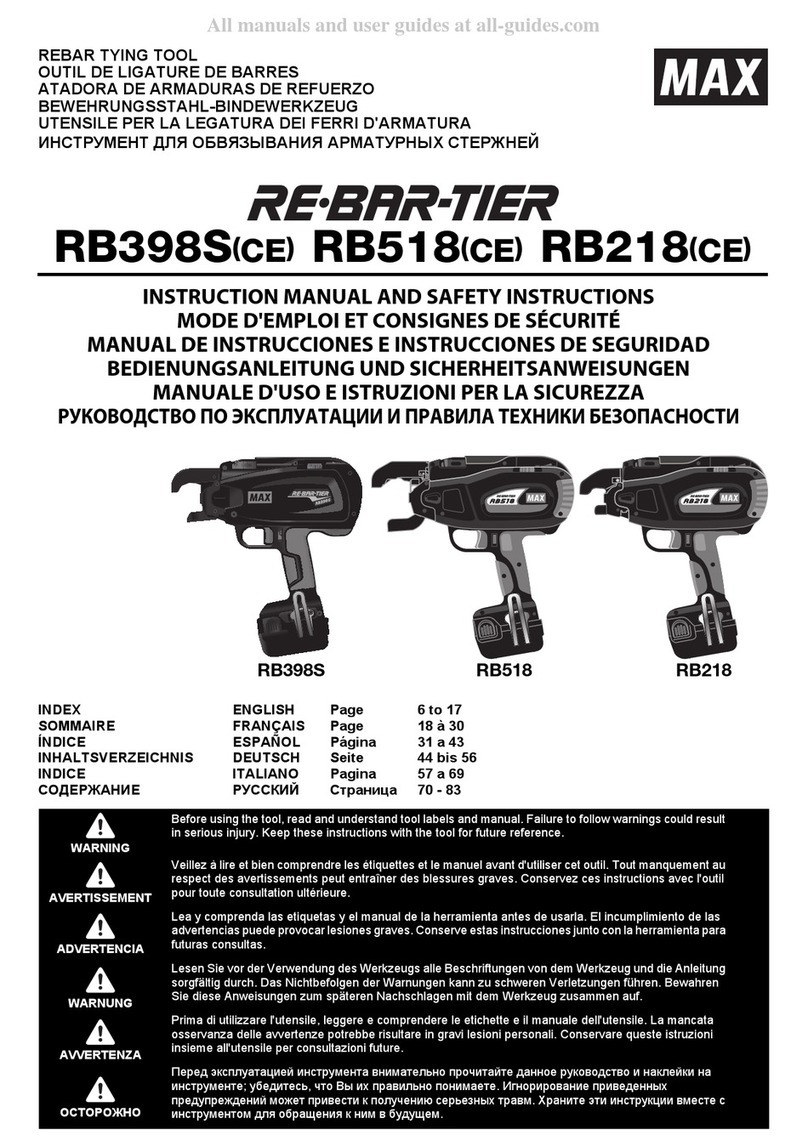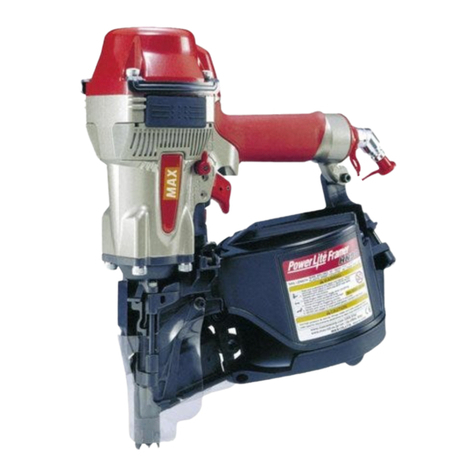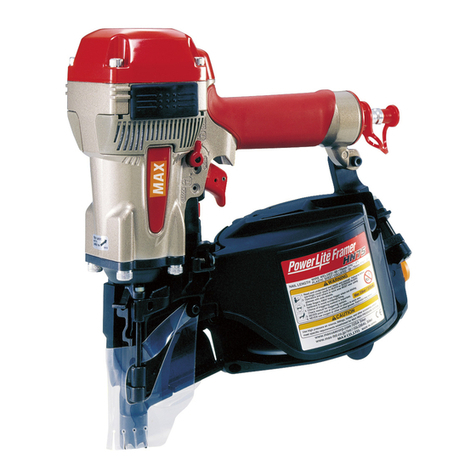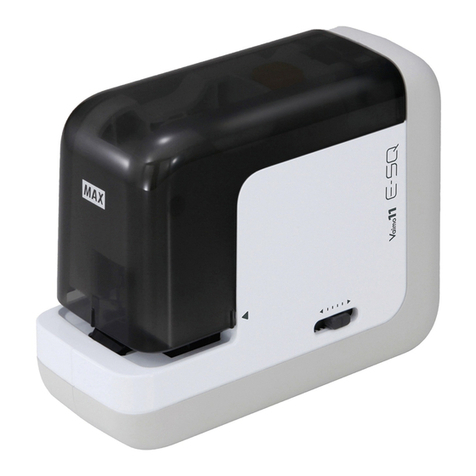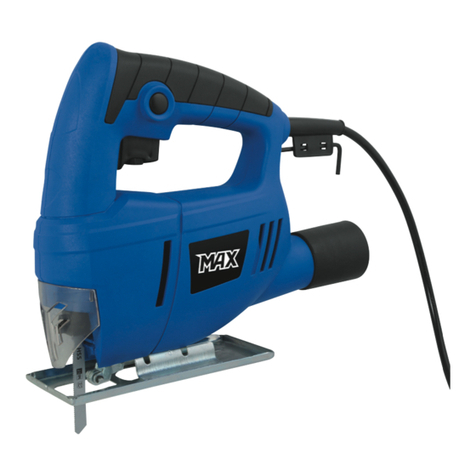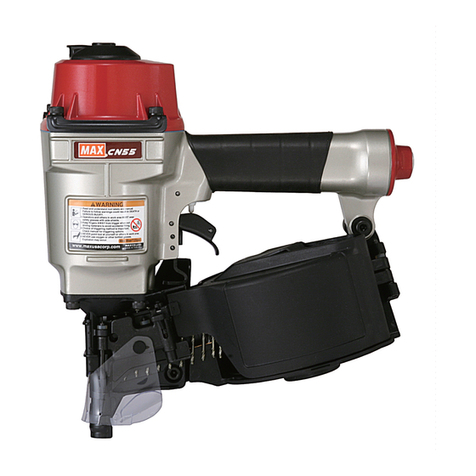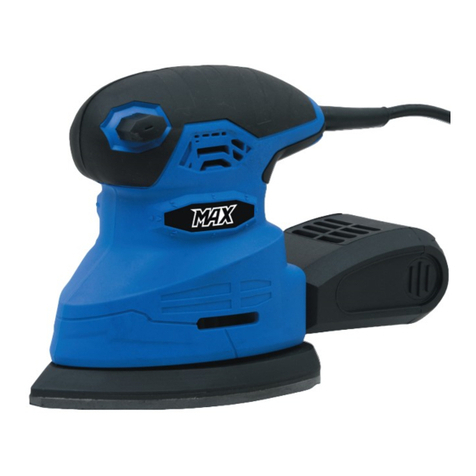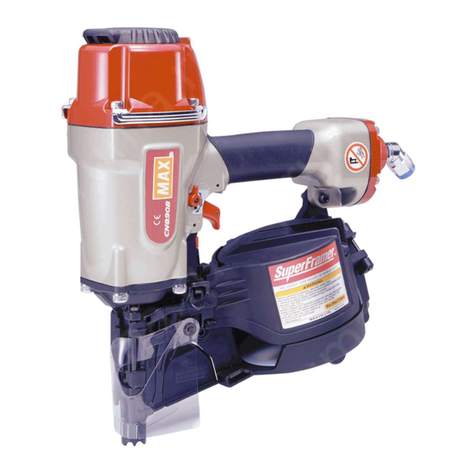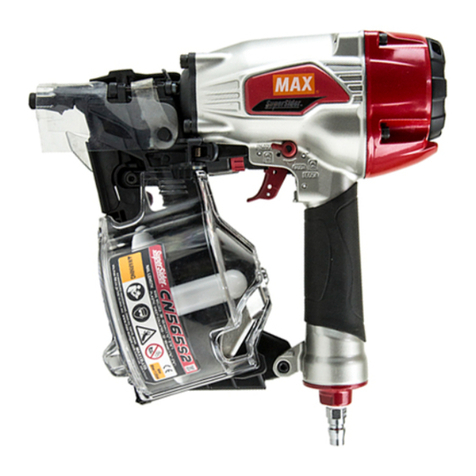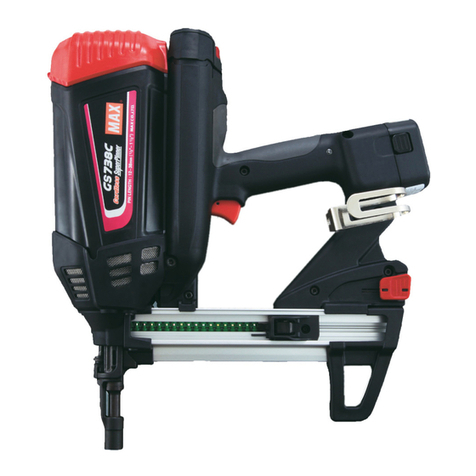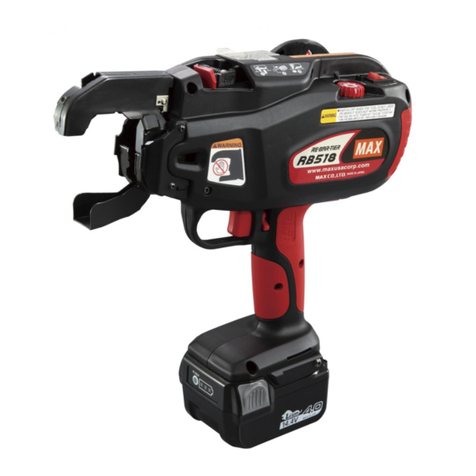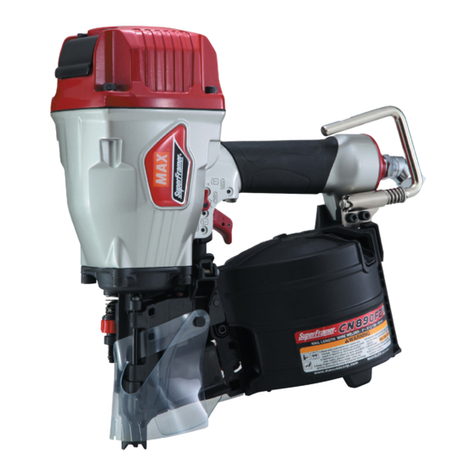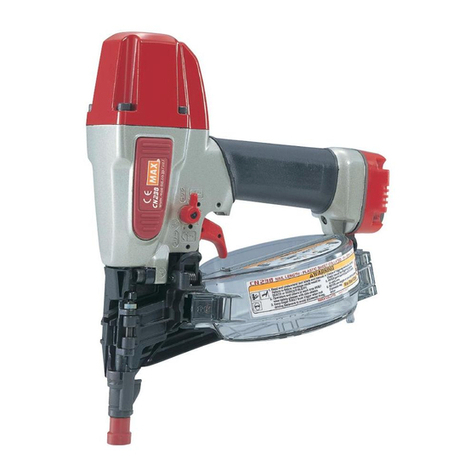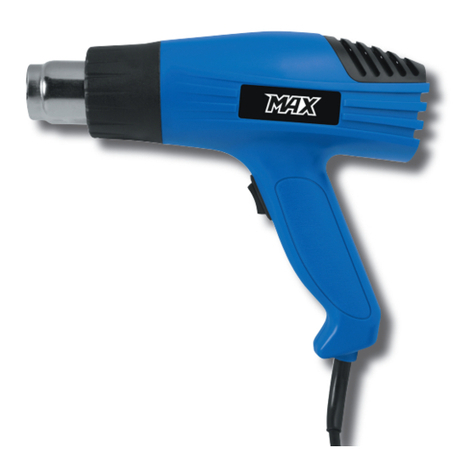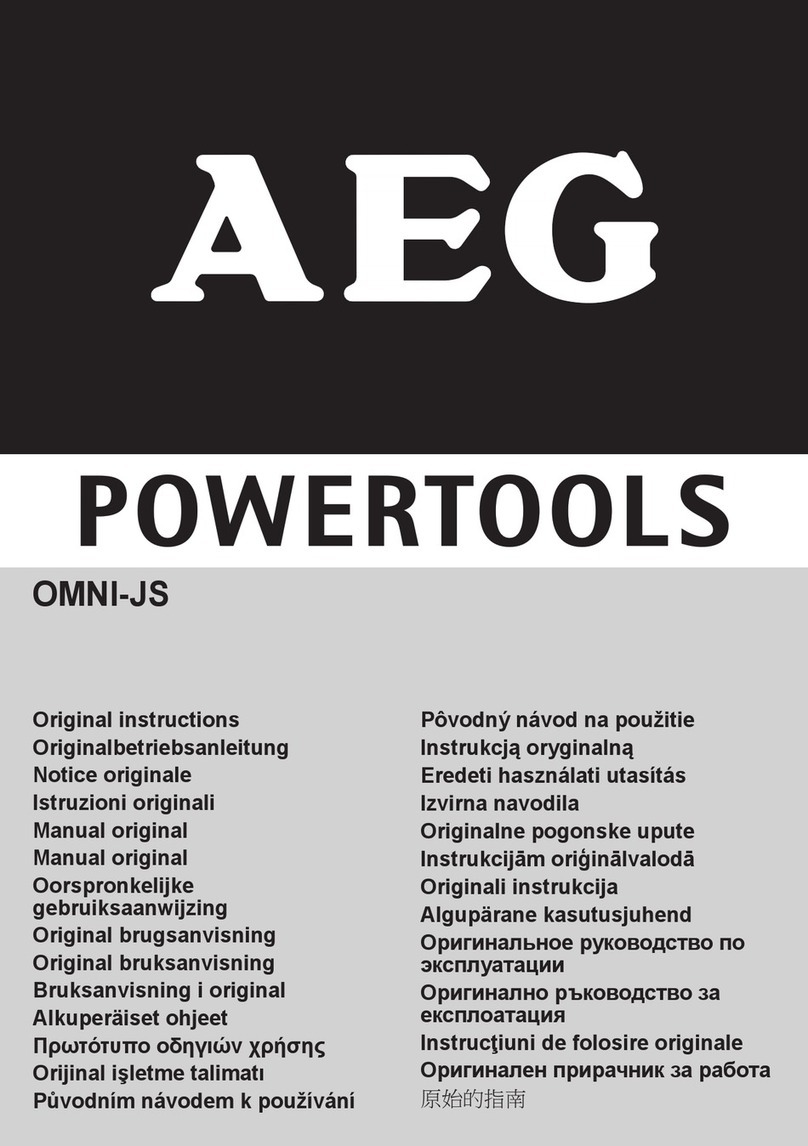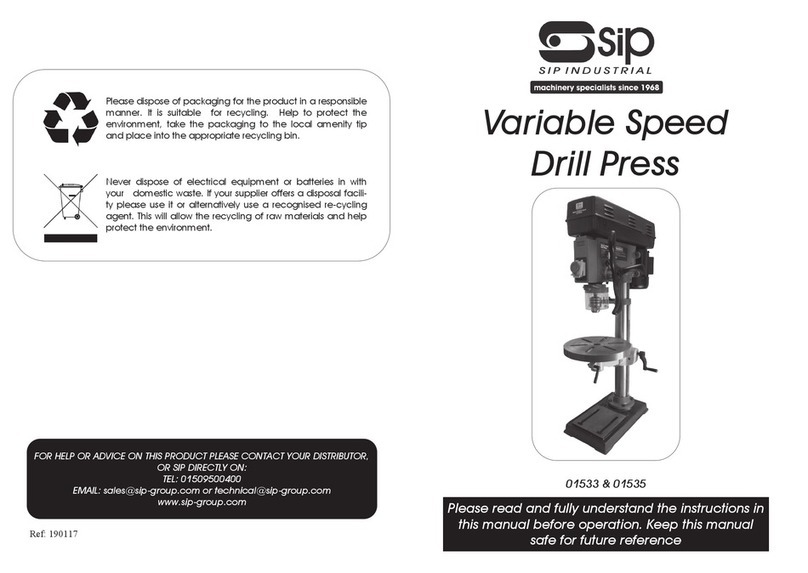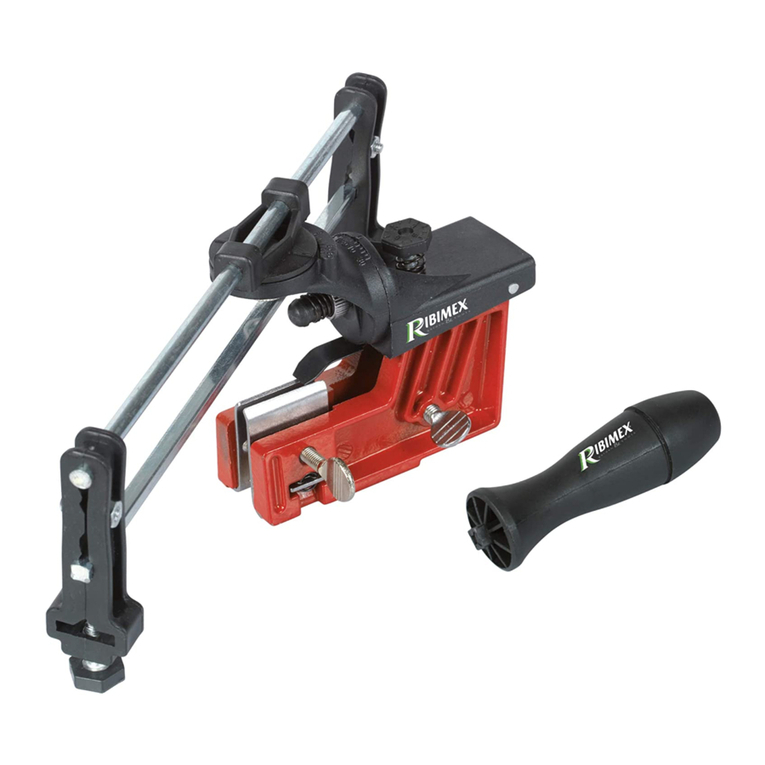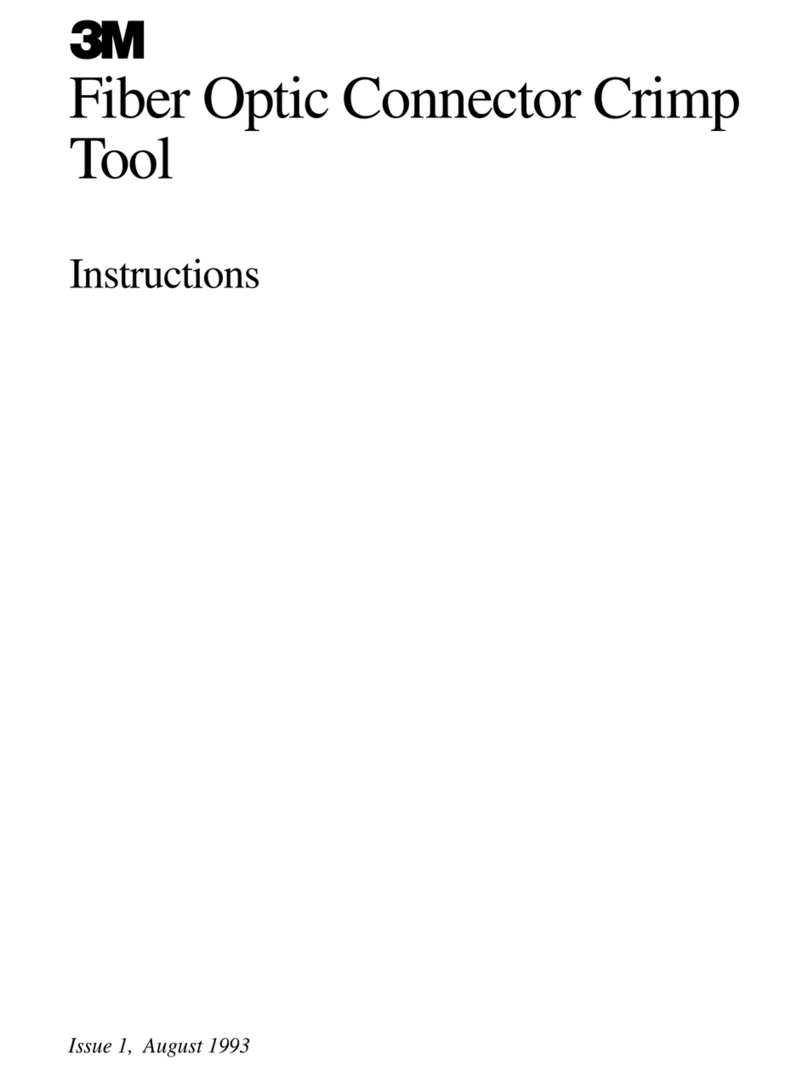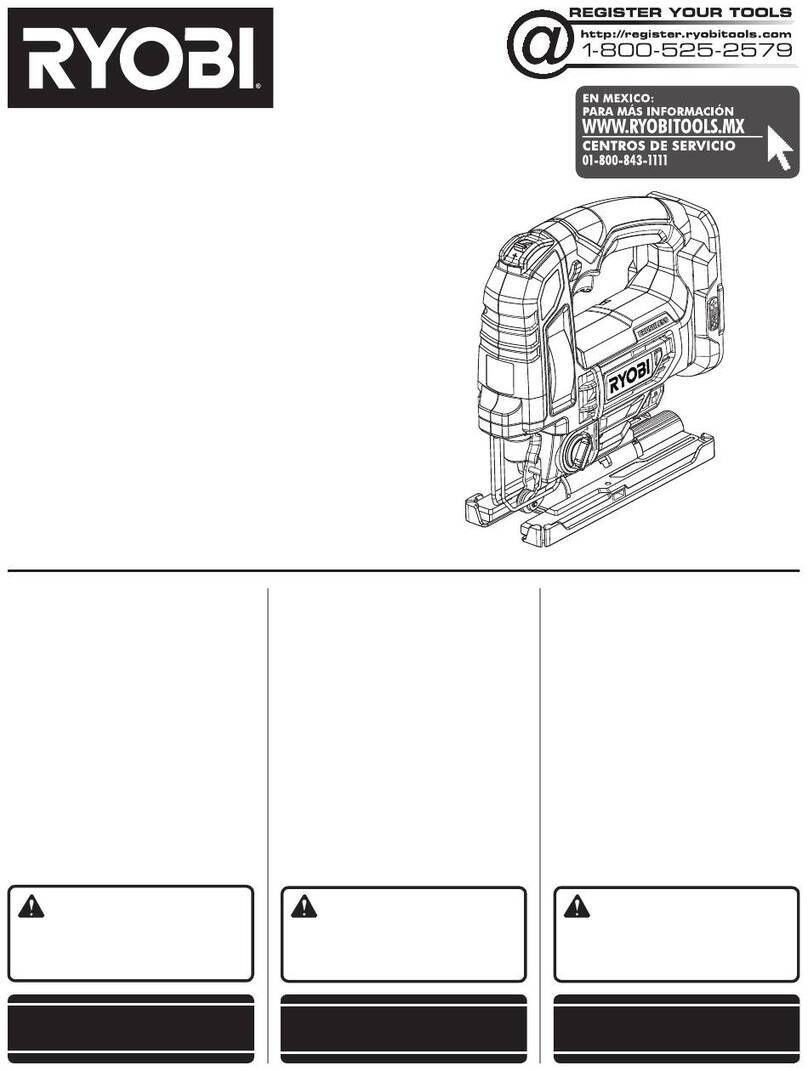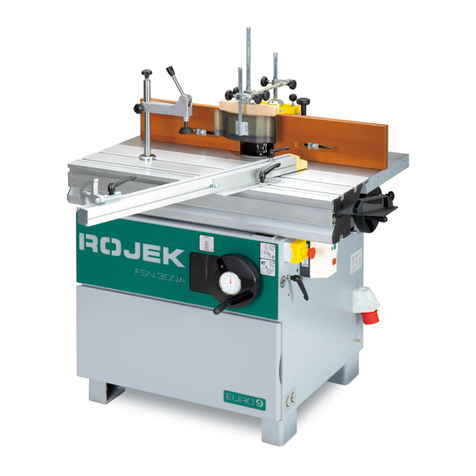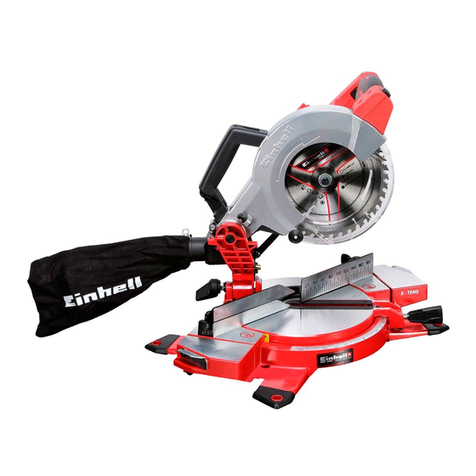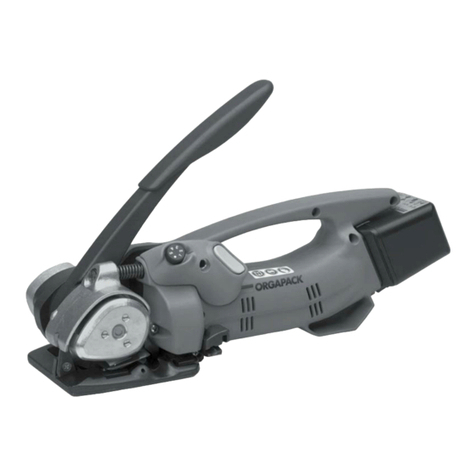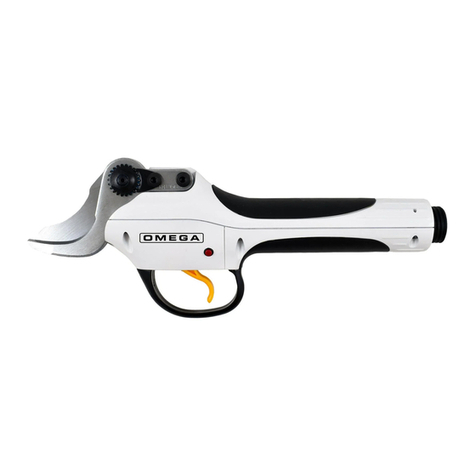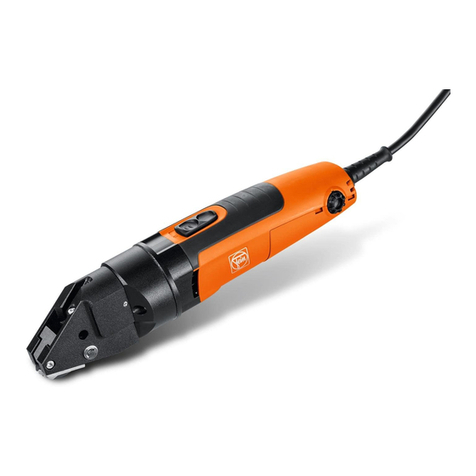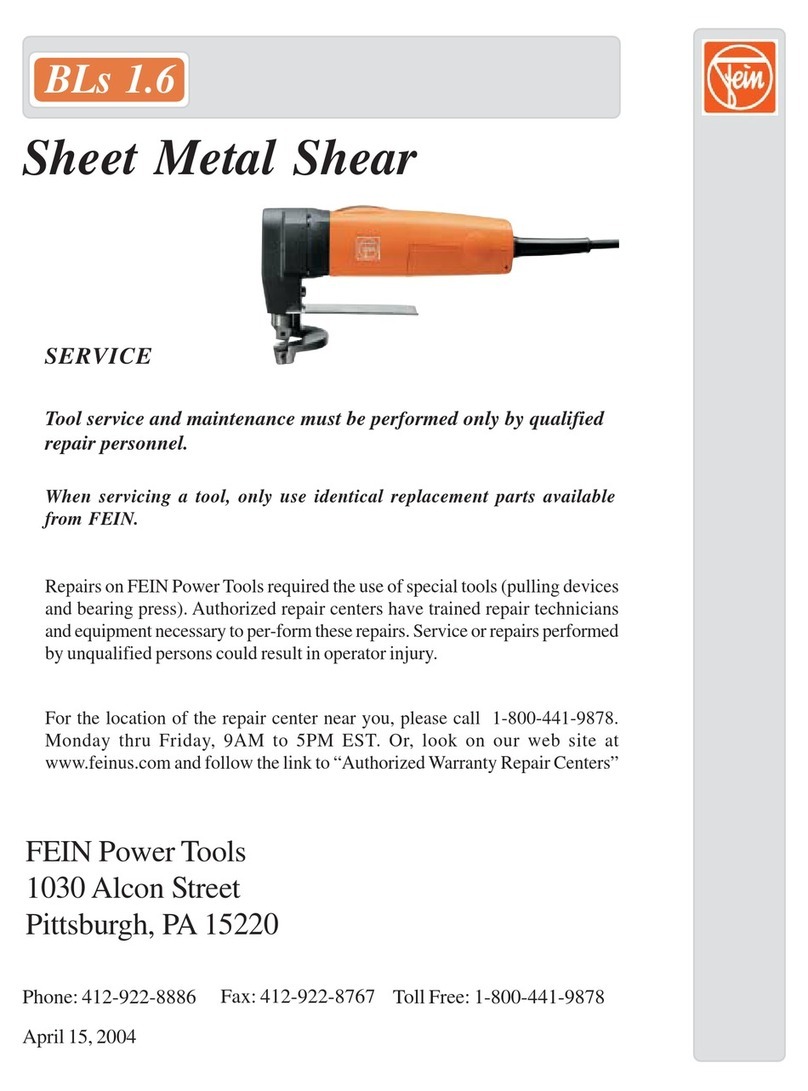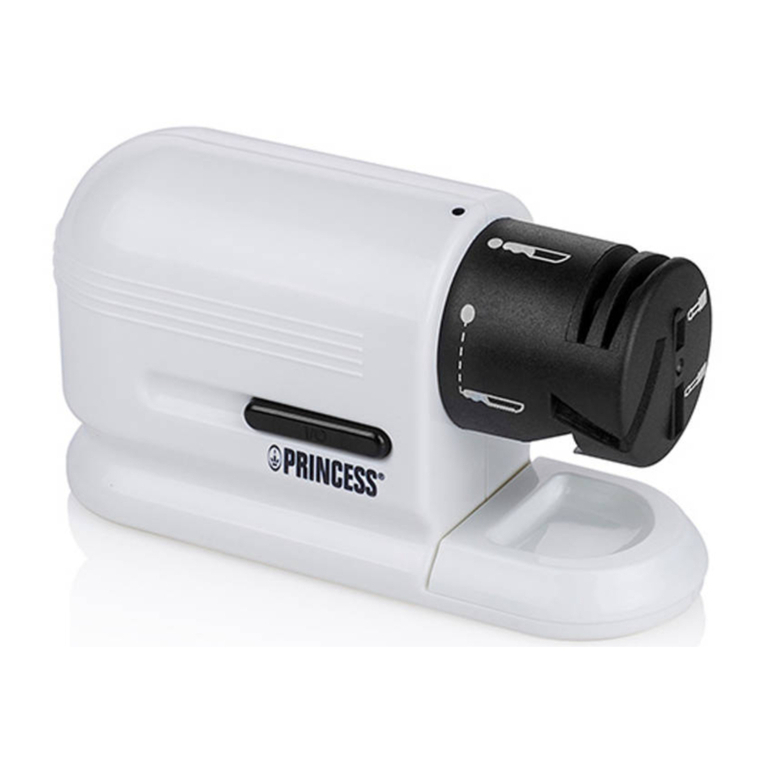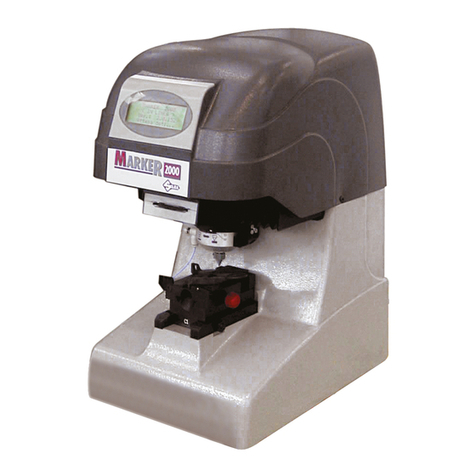1. WEAR SAFETY GLASSES OR GOGGLES
The employer and the user must make sure
that proper eye protection is worn when the
tool is being used. Eye protection equip-
ment must conform to the requirements of
the American National Standards Institute,
ANSI Z87.1 (Council Directive 89/686/EEC
of 21 DEC. 1989) and it must provide frontal
and side protection.
NOTE: Nonside-shielded spectacles and
face shields alone do not provide adequate
protection.
2. EAR PROTECTION MAY BE REQUIRED
IN SOME ENVIRONMENTS
Because working conditions may include
exposure to high noise levels that could lead
to hearing damage, the employer and the
user should make sure that necessary
hearing protection is provided and used by
the operator and others in the work area.
3. DO NOT ALLOW CHILDREN NEAR THE
TOOL
Allow no bystanders, especially children,
near the tool during its operation.
4. DO NOT USE THE TOOL IN THE RAIN,
WHERE WATER IS SPLASHING, IN A
WET PLACE, OR IN A DAMP PLACE
Using the tool in these or similar conditions
will increase the risk of electric shock, dan-
gerous malfunction, and overheating.
Examine tightness
5. INSPECT THE PARTS BEFORE MOUNT-
ING THE BATTERY PACK
•Examine the screws to make sure they
are securely tightened.
Incomplete tightening may result in an
accident or breakage. If a screw is loose,
retighten it completely.
•Inspect parts for damage.
Parts will wear over periods of use. Look
also for missing and defective parts and
for parts of poor quality. If a part must be
replaced or repaired, purchase the re-
placement part at an authorized MAX Co.,
Ltd. distributor.
Use only genuine authorized replacement
parts.
OFF
LOCK
6. BE SURE TO SET THE MAIN SWITCH TO
OFF, TO LOCK THE TRIGGER, AND DE-
TACH THE BATTERY PACK WHEN
CHANGING THE BATTERY PACK, WHEN
REPLACING OR ADJUSTING THE
TIE-WIRE, WHEN ABNORMALITIES
OCCUR, AND WHEN THE EQUIPMENT IS
NOT BEING USED
Leaving the equipment switched on in these
situations may cause breakdowns or dam-
age.
7. KEEP FINGERS AND BODY PARTS
CLEAR OF THE FEEDER ARM AND
CURL GUIDE AT ALL TIMES
Failure to do so may result in serious injury.
3
